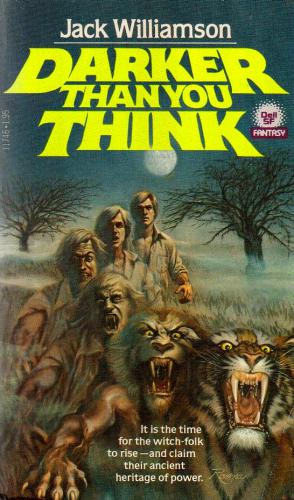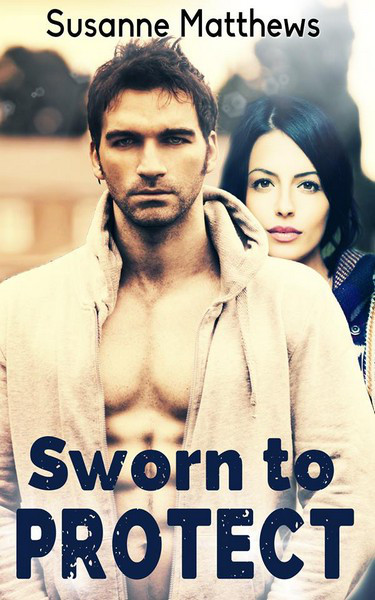A while back I did a Jack Williamson series and I found a few more related reviews in the archive, so I’m taking a brief detour from the H. P. Lovecraft series.
And I am working on some new material.
Raw Feed (2002): Darker Than You Think, Jack Williamson, 1940, 1948.
I originally read this novel because Fortean Miriam de Ford listed it as one of the sf works influenced by Charles Fort. I see no evidence of that.
Fort is not mentioned or even obliquely alluded to.
I think, amongst other things, Williamson was clearly influenced by the work of Rhine on psychic powers, and the notion that these strange powers (which are mentioned in, partially, Fort’s Wild Talents) may be studied scientifically almost certainly comes from there.
If there is any Charles Fort influence, it may be by way of Eric Frank Russell’s Sinister Barrier.
Both novels were published in John Campbell’s Unknown magazine, Russell’s in 1939, Williamson in 1940.
Both novels feature a broad battle between humans and non-humans, Russell’s Vitons and Williamson’s witch-people, with the evidence of those battles showing up in human psychology and odd events.
Both these non-human races feed, in some way, off humans either biologically or using them, in this novel, as slave labor in man’s past.
I was surprised at the tone and narrative approach of Williamson’s novel. The initial transformation of protagonist Will Barbee into a beast is only briefly described. Williamson also seems to have gone out of his way to undercut, through constant mentions of the bestial (cat-like grace, predatory eyes) nature of April Bell and the sense that Barbee has met Dr. Glenn before, lot of the suspense others would have tried milk from the plot.
We are in no doubt (especially, of course, since we know we’re reading a fantasy) that April Bell really is a shapechanger. We aren’t surprised to find that Dr. Glenn, the rational Freudian, really is a member of homo lycanthropus.
I don’t think, given the very unsubtle clues he keeps giving for these characters having a hidden nature, Williamson ever expected to fool the reader.
Rather, the novel is really the struggle between a man’s unconscious desires (Barbee always shapechanges at night, when he’s asleep, except at novel’s end) and his waking morality.
At first it seems like Williamson is doing a sort of Freudian allegory as Barbee helps kill his friends and acquaintances at night and feels guilty about it (and frequently doubting he’s morally culpable or has actually assisted in their deaths) during the day. Barbee, after all, might have reasons for desiring the death of Professor Mondrick who refused his assistance or Sam Quain, the man who married a woman Barbee might have. These desires might account for his fantasies.
But the reader does not really believe they are fantasies. Nor does Barbee give in to April Bell’s calls to kill out of sexual lust for her or unconscious desires. His largely witch blood calls to him. He must kill his friends because they are what they are, different from him. The plot can be seen as Barbee resisting the evil suggestions of April Bell, her sexual temptations overcoming his moral judgment.
But there are early suggestions that a race war is going on between different versions of humanity. Gradually, after participating in murder or being manipulated into assisting Bell’s killings, Barbee accepts his racial heritage as the werewolf messiah the Child of Night.
From a human perspective, he seems consumed by evil. Yet, from a biological perspective, he is helping quell, reluctantly, a threat to his kind. (The novel reminded me of another 1940 novel from the pages of Unknown: L. Ron Hubbard’s Fear which also took place in an academic town and whose plot alternated between explanations of Freudian psychology and demon possession for its character’s actions.)
Even though I knew that Barbee would answer the call of his kind, the novel kept me in suspense with this moral question.
Williamson creates quite an inventive rationale for his plot which makes this sf rather than straight horror. His witch-people (who can change into many shapes imaginary and from nature) can sense probabilities and manipulate them (talk of quantum mechanics is used briefly). They can change any night, not just during the full moon, though, as with traditional werewolves, they can be harmed by silver and, it turns out at novel’s end, radium is the great weapon discovered in the ruins of Ala-shan. They are telepathic.
The origins of the witch-people lie in man’s prehistory during an ice age. Threatened by glaciation, a human mutation (and Williamson throws in Mendelian inheritance science here — evidently new enough to require a fairly detailed explanation) developed the ability to throw their consciousness into collections of matter removed from their body.
Williamson goes on to show how a great many mythologies (as well as folklore about shapechangers) stem from the human–witch-people battle and history. This may not be the first horror novel to show not only a modern battle of humanity with an alien race (though here simply a cousin) but its historical pasts and manifestations in myth and literature and legend, but it may be the first to do so in detail.
H. P. Lovecraft did something similar, but he didn’t show the beginnings of the conflict or provide as much detail. In some sense, this novel reminded me of Erich von Daniken’s later non-fiction works purporting to find ancient astronauts via archeology and myth.
I liked that Barbee was the product of a witch-people eugenics program and not just a random sport. Williamson rationalizes this necessity by talking about how many genes separate true man from the witch-people (most people have a combination of genes) and the very remote possibility that a full blood or even three-quarter blood lycanthrope would appear by chance.
More reviews of fantastic fiction are indexed by title and author/editor.
Advertisements Share this:




